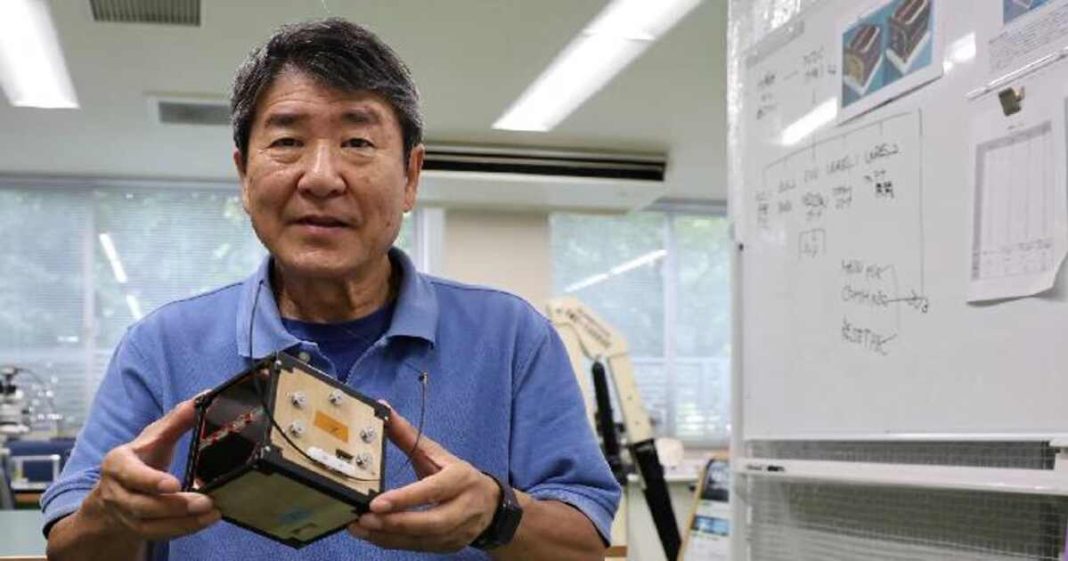In a landmark moment for space exploration and sustainable materials, Japanese researchers launched the world’s first wooden satellite, LignoSat, into orbit this week. Created by Kyoto University in collaboration with Sumitomo Forestry, LignoSat represents a major step in using renewable resources for space exploration, specifically on the Moon and Mars.
World’s First Wooden Satellite
LignoSat, from the Latin word for “wood,” is a small, palm-sized satellite designed to orbit approximately 400 kilometers above Earth. The mission will provide critical insights into how wood holds up in the extreme conditions of space. This satellite was transported to the International Space Station (ISS) on a SpaceX mission, where it will soon be deployed into orbit.
Read More: Longest-serving death row prisoner acquitted in Japan after 56 …
Constructed from honoki wood—a type of magnolia used traditionally in Japan for sword sheaths—LignoSat utilizes Japanese craftsmanship with no screws or glue to keep it together. The researchers hope this unique approach will prove that timber is a feasible material for space use, a novel idea that might change the course of future spacecraft construction.
Cosmic Potential of Timber
The concept of a wooden satellite may seem like a throwback to early aircraft construction, but according to Kyoto University’s forest science professor Koji Murata, it could become a reality for space habitats. Timber is durable in space, where conditions like extreme temperatures, radiation, and the absence of water and oxygen differ vastly from Earth.
Takao Doi, an astronaut and space science expert at Kyoto University, believes timber could enable humans to sustain space colonies on the Moon and Mars. “With timber, a material we can produce by ourselves, we will be able to build houses, live and work in space forever,” he said. Doi and his team envision a 50-year future in which trees are planted on lunar and Martian soil to support timber-based infrastructure.
Advantages of Wood Over Metal in Space
Traditional metal satellites are costly to produce and have a substantial environmental impact, particularly during decommissioning. Upon re-entry, metal satellites typically create aluminum oxide particles, adding pollution to the Earth’s atmosphere. Wooden satellites, however, would simply burn up in the atmosphere without producing harmful particles.
In addition to its eco-friendliness, wood offers potential durability benefits. Unlike on Earth, where moisture and oxygen can degrade timber, the space environment actually preserves it by eliminating these factors. This longevity is critical as space agencies like NASA look for sustainable solutions for the Moon, Mars, and beyond.
Testing Wood in Space
Before launching LignoSat, Japanese researchers conducted a ten-month experiment aboard the ISS to study how various timbers would endure space. They found that honoki wood displayed the best resilience, allowing the team to design LignoSat specifically to withstand the harsh fluctuations of space temperatures—from -100 to 100 degrees Celsius—as well as the intense radiation.
This six-month orbit mission will measure wood’s effectiveness in shielding sensitive equipment from radiation, a key concern for electronic systems in space. If successful, LignoSat could pave the way for a future in which wood competes with metal in the high-tech world of satellites and other space applications.
Future of Timber Technology in Space
The idea of using timber for spacecraft may seem revolutionary, yet experts like Kenji Kariya from Sumitomo Forestry’s Tsukuba Research Institute argue it could invigorate the timber industry. “Expansion to space could invigorate the timber industry,” Kariya said, pointing out that wood is a modern, renewable resource well-suited to humanity’s expansion beyond Earth.
Read More: Japan issues first ‘megaquake’ warning
Doi’s team is optimistic that if LignoSat performs well, they will be able to pitch timber-based space technologies to major players like Elon Musk’s SpaceX. Such technology would revolutionize satellite manufacturing and potentially make timber a standard material for future lunar and Martian settlements.














